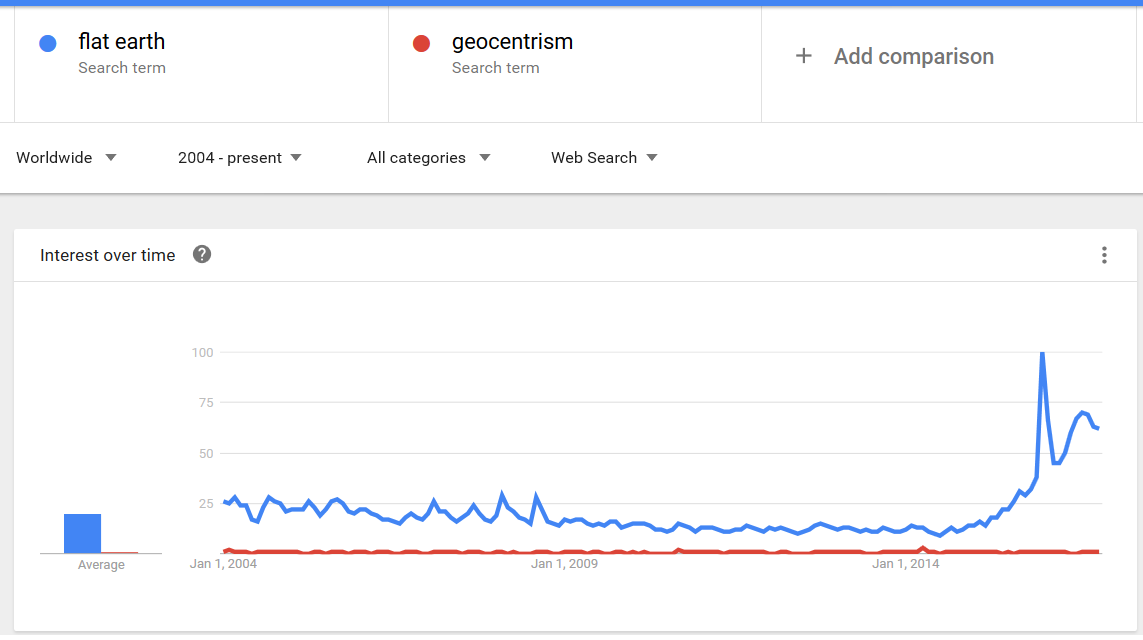In a recent email announcement, Mr. Robert Sungenis stated that “Despite [David] Palm’s efforts, this movement is going forward by leaps and bounds, and, ironically, we have David Palm to thank, for the more of his caustic objections we answer, the more geocentrism is made credible.”
Leaps and bounds? Let’s take a look at the full context. The new geocentrist movement is divisible into two inter-warring factions: geocentrists who believe the Earth is shaped like a sphere, and those who believe the Earth is flat. The former have preempted the label “geocentrists” while the latter usually refer to themselves as “flat Earthers”.
Mr. Sungenis and his associates are firmly among the former. Yet it is the latter who are growing by leaps and bounds. For instance, check out this Google Trends comparison of “geocentrism” and “flat earth”. The trend line for “flat earth” is blue, while the trend line for “geocentrism” is in red:
 If I were in charge of a marketing campaign, I would be thrilled with the flat Earth trend — interest in flat Earth geocentrism has skyrocketed in the past few years.
If I were in charge of a marketing campaign, I would be thrilled with the flat Earth trend — interest in flat Earth geocentrism has skyrocketed in the past few years.
The plain old [ball Earth] geocentrism trend? Not so much. As Google Trends shows, interest in ball Earth geocentrism is flatter than the flat Earth.



